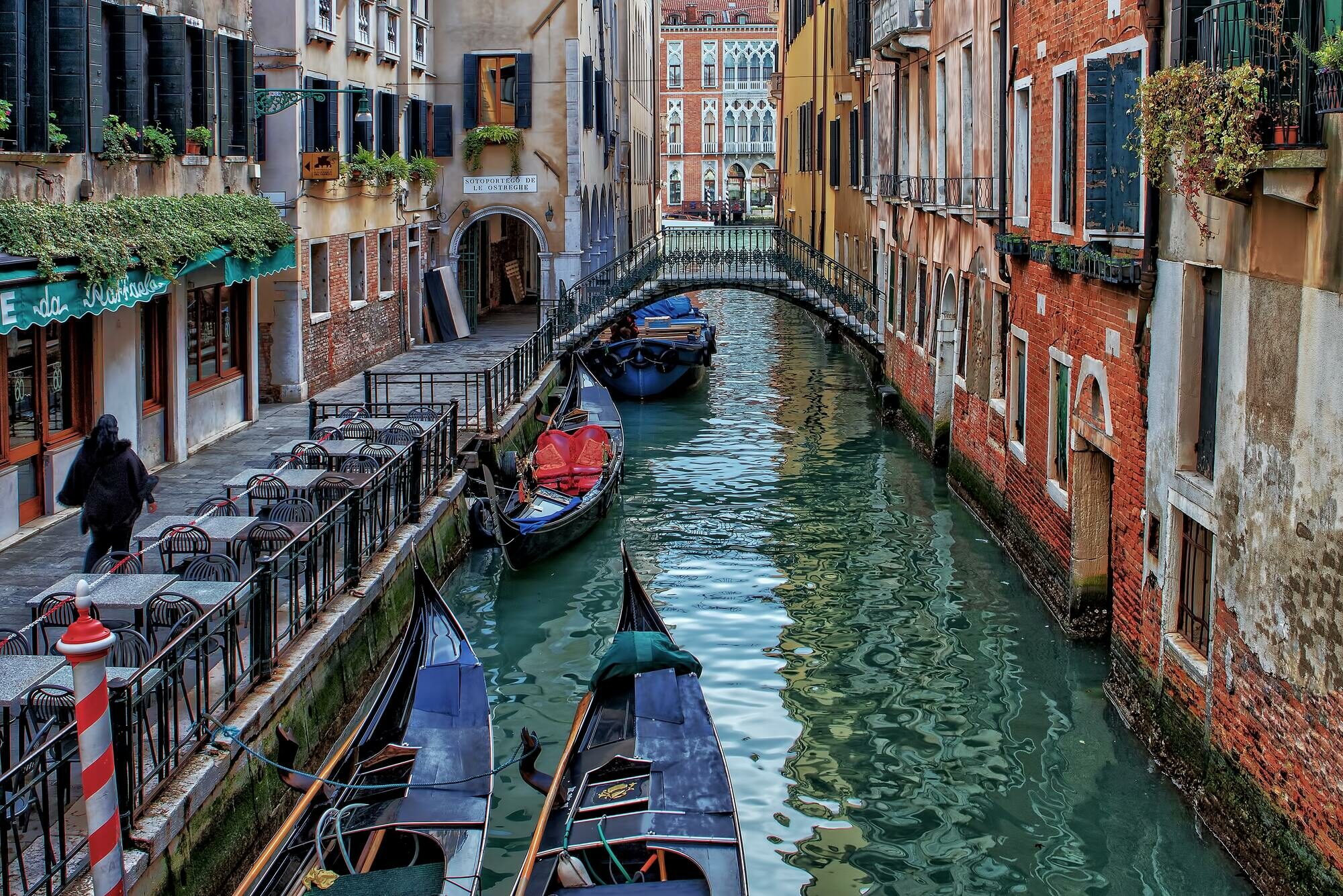Venice’s historic cultural history and aquatic beauty have long drawn tourists from all over the world, yet the city can get congested during the summer months. But there are still some hidden gems and off-the-beaten-path routes in the city.
Ca’ Zappa
A beautiful Dutch house stands alone in this lagoon. It’s tough to get to, and you’d need to own or rent a boat to get there. The white façade was built in 1925 by a Dutch immigrant and has red dormer-style windows and gables that top a colonnaded portico. It lends a magical, even fairytale, feel to this section of the lagoon.
Chioggia
If you find yourself in Venice and in need of some relief, the adjacent village of Chioggia will give you a peaceful break. The fishing village considers itself to be a rougher, less touristic counterpart of its well-known neighbor. It does, in areas, resemble it, with arched bridges and tiny canals. It does, however, have considerably less art and may be an illustration of how Venice would have looked if it had not discovered the riches of trade. If you’re looking for local life and a slower pace, it may make a great day trip with some excellent seafood eateries.
Do Mori Cantina
The Grand Canal is bordered by a diverse mix of pricey, tourist-oriented restaurants. Catina Do Mori, on the other hand, is ideal for catching a peek of local life. This classic Venetian hangout is so small that there are no tables. The long wooden bar serves both food and refreshments. Locals believe that the flamboyant Lothario Casanova used to frequent the pub with his companions years ago. They provide light cuisine, or cicchetti, such as tramezzini, which are crustless sandwiches packed with cured meats and cheeses, and gently fried artichoke hearts. These should be washed down with the native sweet, effervescent red wine.
Libreria Acqua Alta
This bookshop is located on the waterfront and has experienced flooding during the wet seasons. This unusual Venetian business, run by eccentric Venetian Luigi Frizzo, houses hundreds of new and old books. If you’re lucky you may also spot his pet cat. The texts are piled haphazardly in ancient gondolas, bathtubs, boats, and barrels. You can spend many pleasant hours reading through the collection of Italian and foreign reads on sale. But you should also take some time to walk out into the garden and observe the plants. These are located next to a stunning stairway built from old, multicolored books.
Malefatte Boutique
Malefatte (or ‘Misdeeds’) Boutique is a non-profit project sponsored by Rio Tera dei Pensieri, a cooperative that sells items produced by male and female convicts from Venice’s prisons. T-shirts, stitched leather notebooks, and canvas purses are among the handcrafted items. The pricing is reasonable, especially when compared to other Venetian shops, and the website says that all things are fashioned from tortured pasts and optimistic futures.
Osteria Al Bacco
Bacco is a restaurant that is concealed so far down the peaceful Canal delle Capuzine that you are unlikely to come upon it by chance. There are a few tables outside in the vine-covered courtyard. Or you may find a cozy space in the wood-paneled dining room in the winter. It is one of the town’s oldest osterias and serves superb seafood. Choose from from pasta with black squid ink to mussels and grilled sea bass. If the proprietor is in good spirits, he may yank you out of your chair and spin you around the restaurant while playing lively tango music.
San Francesco del Deserto
San Francesco is another island usually overlooked by travelers. It is hidden away between Burano and Sant’Erasmo and is home to a peaceful monastery. The beautiful monastery grounds, with 4,000 cypress trees, are worth a long stroll, as are the ancient cloisters. The monk who guides tourists through the gardens recounts St Francis’ landing on the island in 1220. According to tradition, he placed his stick in the ground, which grew into a pine tree. The birds then came to sing to him
San Francesco della Vigna
Because of its setting at the eastern end of the city, beyond the ancient dockyards, this church is frequently deserted, even during peak season. The exterior was begun in 1534 by Italian artist and architect Sansovino at the request of Doge Andrea Gritti. It was finally completed in 1572 by Palladio. The Renaissance interior is spacious and light, with beautiful frescoes such as Antonio la Negroponte’s Madonna and Child Enthroned. A royal, delicate-faced Mary poses in a rose bower bordered by orange trees. Her gaze fixed on the infant Jesus, who she delicately supports on her knee.
Sant’Andrea Island
Tourists visit Murano to view the glass stores, Burano to see the colorful homes, and Torcello to visit the natural reserve. As a result, the lovely Sant’Andrea is frequently neglected. The rest of the island is overgrown and untidy. All except for a destroyed 17th-century fort built to defend the city from its attackers. The top of the Island’s ragged ruins is an ideal picnic location with unparalleled views of the lagoon and city.
The Venice Ghost Walking Tour
Come out at night to experience Venice’s historical ghosts. Arrive at the Rialto Bridge to be led into secret Venice, over silent canals, and through deserted piazzas. The guide will tell you six enthralling ghost stories as well as some interesting facts about the city. You’ll be led through a maze of quiet backstreet passages and to locations where horrific murders have occurred.

